- Introduction To Photographing Flowers
- Understanding Flowers
- Equipment and Settings
- Lighting and Composition
- Shooting Techniques For Flower Photography
- Processing and Editing After Photographing Flowers
- Flower Photography for Different Occasions
- Best Flower Photography Locations
- Flower Photography Ethics
- Sharing And Selling Your Flower Photos
- Conclusion To Master The Art Of Flower Photography
- Frequently Asked Questions
Introduction To Photographing Flowers
To master the art of flower photography, learn everything about flowers. Photographing flowers is a captivating art that unveils nature’s beauty and intricate details. Capturing the essence of flowers can be challenging and rewarding for photographers. To master flower photography requires a keen sense of composition. Knowledge of lighting techniques and an appreciation for the distinct features of each flower is important. By exploring different angles, colors and textures, photographers create stunning images. Images that evoke emotions and convey the essence of the subject. In this introduction, I examine the fascinating world of photographing flowers. I will explore techniques, equipment and tips to help you enhance your skills and create captivating floral imagery.
Why Flower Photography Is A Popular And Rewarding Genre
Flower photography is a popular and rewarding genre that continues to captivate photographers worldwide. There are several reasons behind its enduring appeal. Flowers are readily available subjects, found in abundance, making them accessible to photographers of all skill levels. Their vibrant colors, intricate details and diverse forms provide endless creative possibilities. Photographing flowers allows us to connect with nature on a deeper level, appreciating the delicate beauty of these natural wonders. Capturing stunning images of flowers can evoke emotions and convey messages, making it a powerful means of self expression. Furthermore, the versatility of flower photography enables photographers to experiment with various techniques and styles. Thereby ensuring a continuous learning and growth process.
How To Get The Most Out Of This Master The Art Of Flower Photography Guide
To maximize your learning experience with the guide “Master The Art Of Flower Photography” here are some tips to get the most out of it. Embrace an open mind and a genuine desire to learn. Incorporate new techniques and concepts. Focus on reading each chapter thoroughly, absorbing the knowledge and understanding the principles discussed. As you progress, apply what you learn by practicing with your camera and experimenting with different approaches. Take advantage of the guide’s practical exercises and create assignments to refine your skills. Engage with the accompanying visual examples and case studies to gain insights and inspiration. Finally, actively participate in any discussion forums or communities related to the guide, as they provide opportunities to connect with fellow photographers and share experiences and insights.
Understanding Flowers
The Anatomy Of A Flower
The anatomy of a flower unveils the intricate structures and fascinating mechanisms that contribute to its beauty and reproductive process. At its core, a flower consists of several key parts. Stamens produce pollen to fertilize pistils, the female reproductive organs. The pistil comprises the stigma, style and ovary, where the ovules develop into seeds after pollination. Surrounding these reproductive organs, petals attract pollinators with their vibrant colors and enticing scents. The sepals protect the developing bud before it blooms. Understanding the anatomy of a flower empowers us to appreciate its complexity and marvel at nature’s remarkable design.
Color theory and how it affects flower photography
Color theory plays a significant role in flower photography Colors influence the mood, impact and overall aesthetic of the captured images. Understanding color theory empowers photographers to make intentional choices and create visually compelling compositions. Colors evoke emotions and convey messages. In flower photography, they can accentuate the beauty and story of the subject.
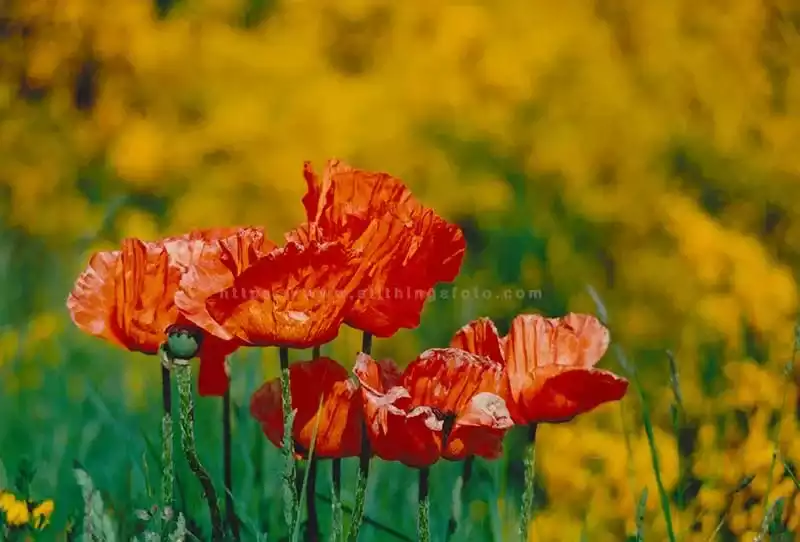
Warm colors like red, orange and yellow often create a sense of energy, vibrancy and excitement. Cool colors (blue, green, purple) evoke tranquility and serenity. Complementary colors, found opposite each other on the color wheel, create strong visual contrast. Analogous colors, located adjacent to each other on the color wheel, create harmonious and cohesive compositions.
Furthermore, the intensity or saturation of colors can influence the visual impact, with vibrant, saturated hues drawing attention and muted or pastel shades creating a softer, more delicate atmosphere. By understanding color theory, photographers can use colors strategically to enhance the visual impact and tell a captivating story through their flower photography.
Different Types Of Flowers And Their Unique Characteristics
The world of flowers offers a wide variety of unique characteristics. From delicate petals to striking blooms, flowers come in various types, each with distinct features that set them apart. Roses, with their velvety petals and intoxicating fragrance, symbolize love and beauty. Sunflowers, with their vibrant yellow petals and towering stature, evoke feelings of happiness and warmth.
Orchids, known for their intricate patterns and exquisite shapes, exude elegance and sophistication. Tulips, with their diverse range of colors and graceful forms, symbolize spring and rebirth. Daisies, with their simple yet charming appearance, represent innocence and purity. Lilies, with their majestic blooms and sweet fragrance, embody grace and spirituality. Irises, with their unique petal structure and rich hues, exude mystery and elegance.
Each flower type carries its own symbolic meanings, cultural significance and aesthetic appeal. Thereby making them fascinating subjects for photography and admiration. Exploring flowers offers boundless variety in shape, size, color and texture. Allowing us to marvel at the boundless creativity of nature. Whether it’s the boldness of a sunflower or the delicate intricacy of an orchid, each flower type invites us to appreciate its unique characteristics. And experience the beauty that they bring to the world.
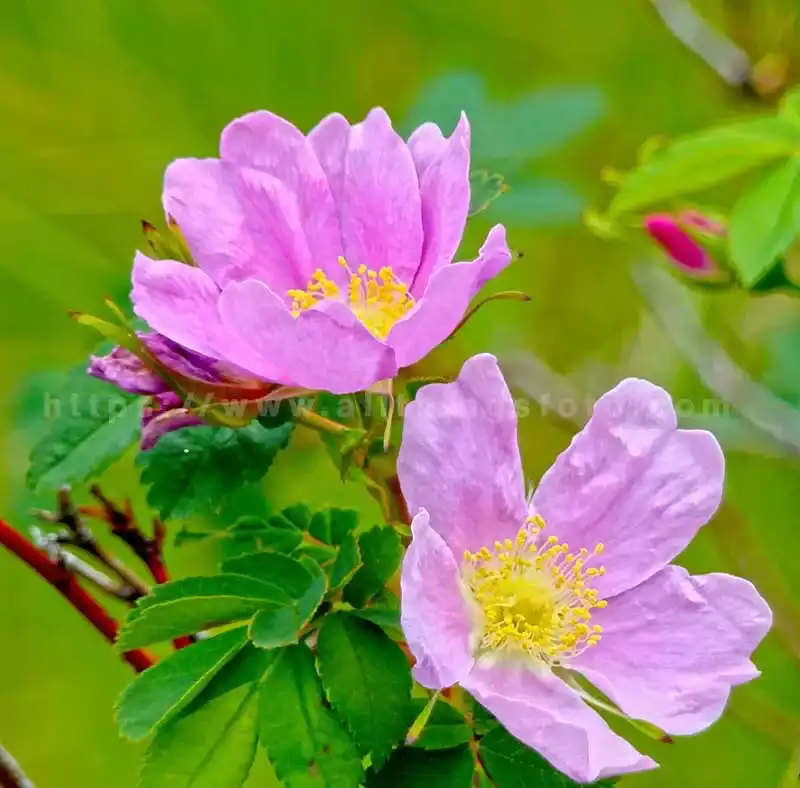
Equipment and Settings
Cameras And Lenses For Mastering Flower Photography
Choosing the right camera and lens for flower photography is important when capturing stunning, detailed images. Choose a camera with manual controls and a high resolution sensor. This allows for greater control over exposure, focus and depth of field. Auto focus sometimes struggles with macro or close up photographs of flowers. DSLR and mirrorless cameras are popular choices due to their versatility and interchangeable lens systems.
When choosing the right lens, macro lenses are ideal for flower photography as they allow close up shots with excellent magnification. A 60mm to 100mm macro lens is the common choice. Offering a comfortable working distance and producing sharp images with intricate details. Extension tubes add further macro magnification for more details.A telephoto lens can be advantageous for photographing flowers from a distance. Allowing you to capture them in their natural habitat or isolating specific elements within a composition.
Prime lenses, with their wide maximum aperture, deliver a shallow depth of field. This allows for beautiful background blur and emphasizing the flower’s subject. Zoom lenses provide flexibility in composing various shots and adjusting the framing without the need to change your lens. Don’t overlook third party lenses which although cheaper in price, provide outstanding quality.
Other essential equipment includes a sturdy tripod to ensure stability and sharpness. This is important for macro shots that require longer exposure times. A remote shutter release or self timer function can further minimize camera shake.
Experimenting with different lenses, focal lengths and apertures helps you capture unique perspectives of flowers. Ultimately, the choice of camera and lens should align with individual preferences, shooting style and desired results. Therefore allowing photographers to unleash their creativity and capture the intricate beauty of flowers in their full glory.
Essential Gear And Accessories To Master The Art Of Flower Photography
To achieve outstanding results in flower photography, certain essential gear and accessories enhance your shooting experience. For optimal lighting control, a diffuser or reflector is invaluable. These accessories help soften harsh sunlight or redirect light to fill in shadows. Thereby providing a more balanced and pleasing illumination of the subject. A collapsible reflector with different surfaces like silver, gold and white offers versatility in adjusting light and creating various effects.
When shooting outdoors, a portable and lightweight pop up tent or portable studio creates a controlled environment. Protecting the delicate flowers from wind or harsh lighting conditions. A set of extension tubes can enable greater magnification by increasing the distance between the lens and the camera sensor. This allows for extreme close up shots and the exploration of intricate details. A polarizing filter is handy for reducing glare and reflections on flower petals or leaves. The end result is more vibrant colors and enhanced contrast.
A portable LED light panel or ring light can be useful for illuminating flowers in low light situations or for adding creative lighting effects. Using a macro focusing rail provides precise control over the focus position, allowing for fine adjustments and achieving critical sharpness in macro shots. A comfortable camera bag or backpack helps organize and protect your gear during transportation. This ensures everything is accessible while on location.
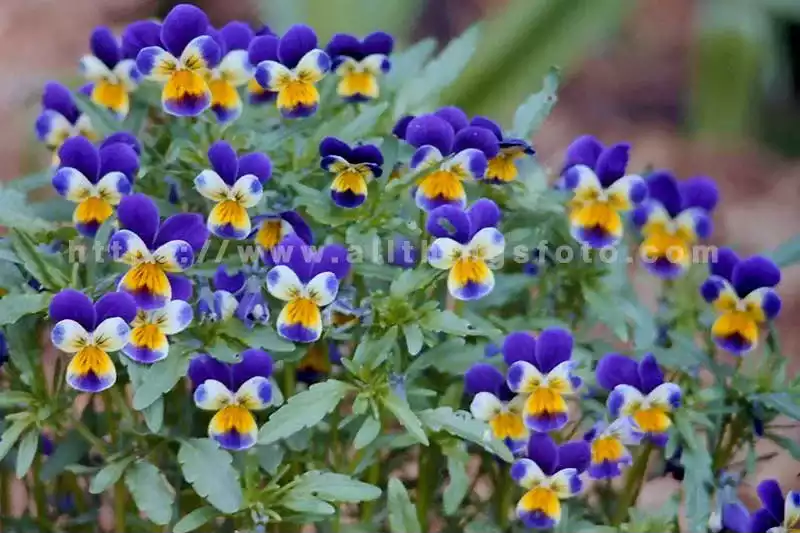
Camera Settings And Techniques For Capturing Stunning Flower Photos
Mastering camera settings and employing effective techniques are essential for capturing stunning flower photos. Selecting the appropriate shooting mode allows for greater control and flexibility. Manual mode enables full control over exposure, aperture and shutter speed. It allows for precise adjustments to achieve the desired depth of field and proper exposure. Aperture priority mode is useful for controlling the depth of field. Like when emphasizing the flower’s subject against a blurred background.
For example: a wide aperture of f2.8/f4 creates shallow depth of field. Thereby isolating the flower and creating a pleasing background blur. However, a smaller aperture (higher f-number) such as f/8 or f/11 will maintain sharpness across the entire flower or when capturing a group of flowers.
Another crucial aspect is focusing. Utilizing single point autofocus allows for precise focus on the flower’s key details. Details like the center or the tip of the petal. Manual focus gives full control over the focus point, ensuring sharpness where desired.
Incorporating compositional techniques like the sunny 16 rule, rule of odds, rule of thirds, leading lines or framing can add visual interest and draw attention to the flower. Experiment with different angles, perspectives and framing to create unique and captivating compositions.
Understanding and applying camera settings and techniques helps photographers capture stunning flower photos and videos. Photos and videos that showcase the intricate beauty and evoke emotions in the viewers.
Lighting and Composition
The Importance Of Lighting In Flower Photography
Lighting plays a crucial role in flower photography, impacting the final outcome of the images. Proper lighting can enhance colors, reveal intricate details and create a captivating atmosphere. Soft, diffused natural light, like cloudy days or shade, produce gentle, even lighting. This type of light enhances the flower’s colors and textures. Backlighting can add an ethereal glow or reveal translucent petals. Be cautious of harsh midday sunlight. It creates strong shadows and washes out colors. By understanding and utilizing light, photographers can elevate their flower photography. Proper lighting brings out the beauty and captures the essence of these exquisite subjects.
Natural vs. Artificial Light
In flower photography, the choice between natural and artificial lighting impacts the mood and overall aesthetic of the images. Natural lighting, like sunlight creates beautiful and authentic illumination. It highlights the true colors and textures of the flowers. The soft, diffused light during the golden hours of sunrise or sunset create a warm and magical atmosphere. Artificial lighting provides control and consistency.
Continuous artificial lighting, such as LED panels or studio lights, allows photographers to shape and direct the light. Thereby emphasizing specific areas or adding dramatic effects. Artificial lighting enables shooting in low light conditions or indoors. Which expands the possibilities for flower photography. Both natural and artificial lighting have their advantages and if utilized creatively.
It’s essential to consider the desired outcome and experiment with different lighting sources. This helps to achieve the desired mood and highlight the unique qualities of the flowers. Ultimately, the choice between natural and artificial lighting depends on the vision and artistic intent of the photographer.
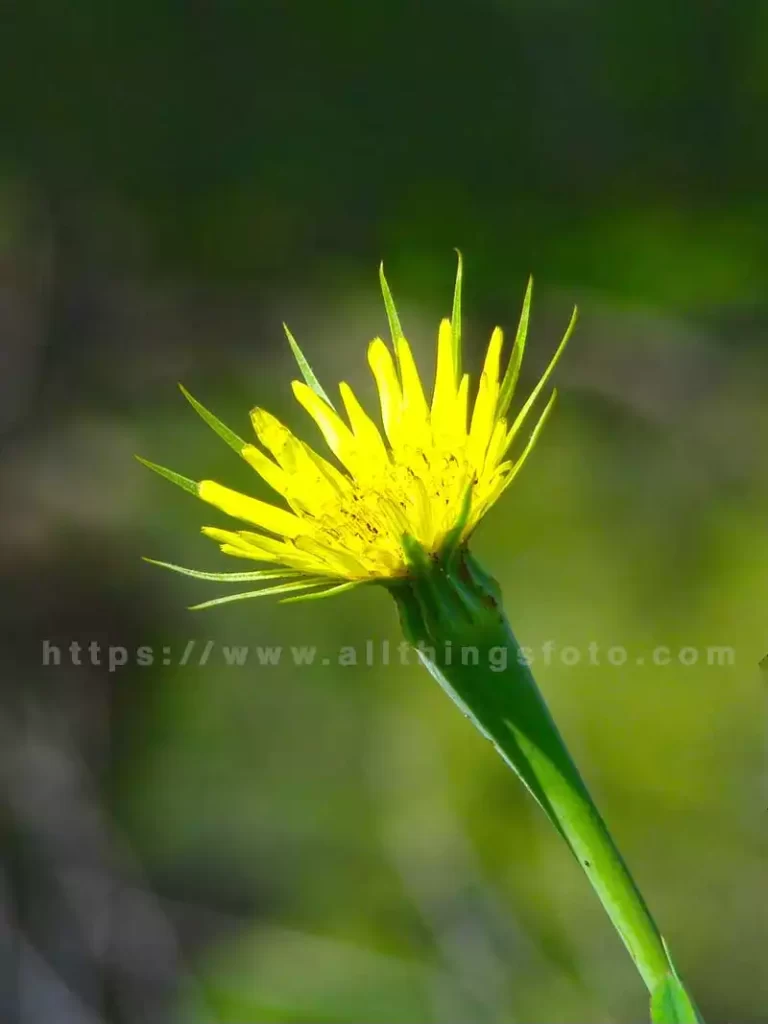
Composition Techniques For Creating Visually Appealing Flower Photos
Mastering composition techniques is crucial for creating visually appealing flower photos. The rule of thirds guides photographers to divide the frame into nine equal parts using two horizontal and two vertical lines. Placing the main subject, such as the flower along these lines or at their intersections creates a more dynamic and balanced composition.
Leading lines are another powerful technique. Utilizing natural lines, such as stems or petals, directs the viewer’s gaze towards the focal point. And adds depth and visual interest to the image.
Framing involves using elements in the foreground to frame the flower. Thereby drawing attention to the subject and adding a sense of depth. This could include leaves, branches or other flowers surrounding the main subject.
Depth of field is important to consider. A wide aperture results in a shallow depth of field. This brings the flower into sharp focus while blurring the background. Thereby isolating the subject and creating a sense of depth.
Negative space is an effective technique where the main subject is placed against a simple, uncluttered background. This minimalist approach draws attention to the flower and emphasizes its beauty.
Experimenting with different angles and perspectives can yield unique and captivating results. Shooting from a low angle can showcase the flower’s height and emphasize its presence. Shooting from above can create an interesting overhead view.
Mastering these composition techniques and combining them creatively, photographers can elevate their flower photos. Which creates visually appealing images that leave a lasting impression.
Shooting Techniques For Flower Photography
Different Shooting Techniques For Flower Photography
Flower photography offers a wide range of creative possibilities. Mastering different shooting techniques enhances the visual impact of your floral images.
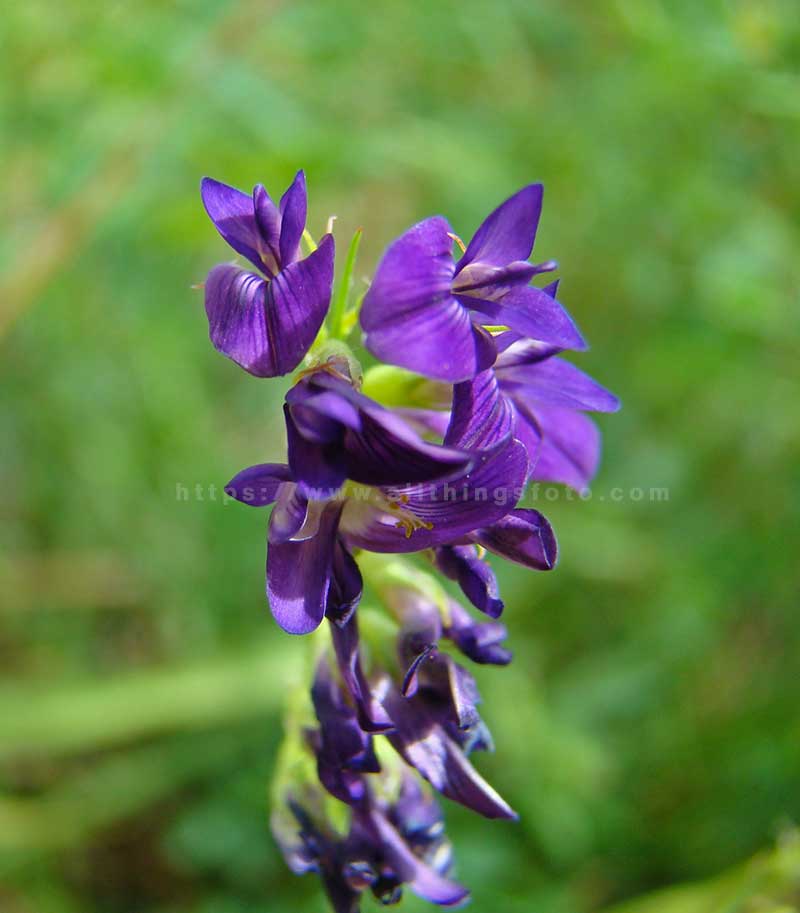
Here Are Some Popular Techniques To Consider:
Macro Photography
Capture intricate details by using a macro lens or extension tubes. Get up close to reveal the fascinating textures, patterns and structures of flowers.
Shallow Depth of Field
Utilize a wide aperture (low f number) to isolate the subject from the background. This creates a beautiful bokeh effect. The bokeh technique draws attention to the flower while blurring distracting elements.
Backlighting
Shoot flowers with light coming from behind, highlighting their delicate petals and creating a translucent effect. Experiment with different angles and adjust exposure settings to achieve desired results.
Silhouettes
Capture striking silhouettes by positioning flowers against a bright background. Backgrounds like the sky or a well lit window. Expose for the background to create dramatic outlines of the flowers.
Motion Blur
Introduce a sense of dynamism by deliberately moving the camera or using a slow shutter speed while photographing swaying flowers. This technique adds a artistic or abstract quality to your images.
Reflections
Look for reflective surfaces like water droplets or shiny objects to capture flower reflections. Experiment with angles and compositions to create unique and captivating images.
High Key Photography
Create a bright and ethereal look by intentionally overexposing the image. This technique works especially well for capturing light colored or delicate flowers. The result is a dreamy and soft aesthetic feeling.
Focus Stacking
Subjects with multiple layers or intricate details, benefit from focus stacking to achieve maximum sharpness throughout the image. Capture multiple shots with different focus points and blend them together afterwards using processing software.
Symmetry and Patterns
Explore the symmetrical nature of flowers by positioning them centrally or using a mirrored reflection. Look for flowers with repetitive patterns or structures to create visually appealing compositions.
Creative Angles
Experiment with different angles and perspectives to add interest to your flower photographs. Try shooting from low angles, looking up at the flowers or even shooting from underneath for a unique and fresh viewpoint.
Freeze Motion
Capture the dynamic beauty of flowers in motion by using a fast shutter speed. This technique works well for photographing flowers swaying in the wind. Or capturing droplets of water splashing off petals.
Remember, these techniques are just starting points. Your creativity and experimentation will lead to truly unique and captivating flower photographs.
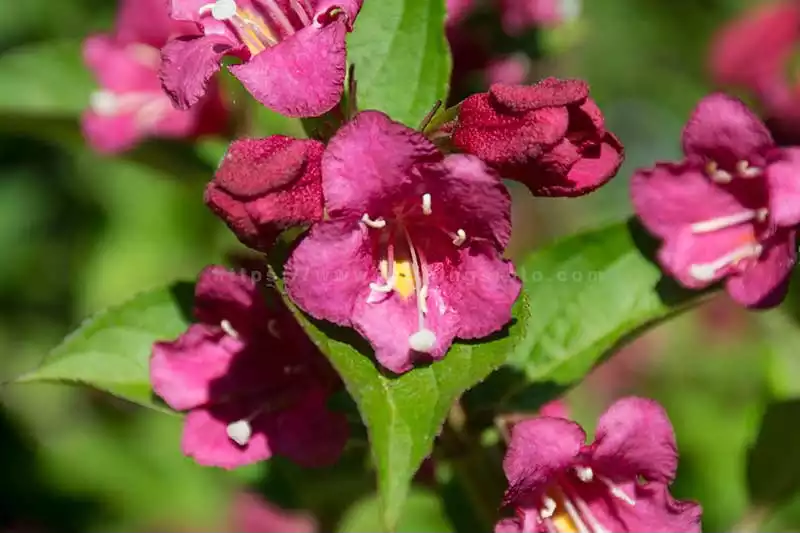
Macro And Close Up Photography
Macro and close up photography offers a myriad of benefits. These benefits enrich your photographic experience and expand your creative horizons.
Macro and close up photography allows you to capture the smallest details of your subject. Thereby unveiling a world often unnoticed by the naked eye. Details like the delicate texture of a flower petal to the intricate patterns on the pistil or stamen.
Getting up close and personal with your subject, you present it from a perspective rarely seen. This fresh viewpoint offers a unique visual experience. Transforming ordinary objects into captivating works of art. Macro lens photography highlights the extraordinary within the ordinary.
Macro lens and close up photography provide many opportunities for experimentation and creativity. You can explore various compositions, angles, lighting techniques and depth of field. This genre challenges you to think outside the box, fostering artistic growth and pushing the boundaries of your photography skills.
Macro lens photography enables you to dive deep into the intricate ecosystems of flowers. Capturing the hidden beauty of pollen laden stamens and delicate nectar filled petals. You intimately observe the intricacies of flora and fauna through the lens. Gaining a deeper appreciation for the beauty and diversity of the environment. It allows you to connect with nature on a profound level. You’re left with awe and respect for the natural world.
Macro and close up photography is a meditative and mindful practice. It requires patience, focus and attention to detail. Allowing you to slow down and appreciate the present moment. Thereby reducing stress and providing a sense of calm and tranquility.
For an aspiring photographer or one seeking a new perspective, macro and close up photography offers many benefits. Benefits that enhance your visual storytelling and provide a deeper connection with the world around you.
Tips For Shooting Flowers In The Field
Research and Scout Locations:
Before heading out, research and identify potential locations with a diverse range of flowers. Look for public gardens, nature reserves or even local parks that are known for their floral displays. Plan your visit during the garden or peak bloom season for the best opportunities for photographing flowers.
Patience and Observation:
Take your time to observe the flowers and their surroundings. Look for interesting patterns, textures or any visitors like bees or butterflies that can add life to your images. Patience provides you with the right moment to capture the perfect shot.
Utilize Natural Elements:
Incorporate natural elements like leaves, branches or rocks as foreground or background elements to add depth and interest to your compositions.
Pay Attention to the Background:
Ensure the background does not distract from the flower. Look for clean, uncluttered backgrounds that complement the colors and shapes of the flowers.
Embrace Negative Space:
Leave empty space around the flower to emphasize its beauty and create a sense of simplicity and elegance. Negative space draws attention to the subject and adds a visual breathing room.
Play with Color Contrast:
Seek out flowers that have contrasting colors in their surroundings. For instance, a vibrant red flower against a lush green background or a yellow flower against a blue sky. This contrast adds visual impact and makes the subject pop.
Experiment with Motion:
Capture the gentle movement of flowers in the wind by using a slower shutter speed. This technique can create a soft and ethereal look, adding a sense of dynamism and artistry to your images.
Capture Different Stages:
Photograph flowers at various stages of their life cycle, from budding to blooming and wilting. This tells a story and adds a narrative element to your images, showcasing the beauty and transience of nature.
Seek Out Uncommon Flowers:
Explore lesser known or rare flower species to create a sense of intrigue and discovery in your photographs. This allows you to showcase the unique and extraordinary aspects of floral diversity.
Utilize Leading Lines:
Look for natural lines in the environment such as paths, fences or rows of flowers that lead the viewer’s eye towards the main subject. This creates a sense of depth and guides the viewer’s gaze.
Experiment with Lens Filters:
Explore the use of different lens filters like a polarizing filter to reduce glare and enhance colors. Or a graduated neutral density filter to balance exposure between the sky and flowers.
Create a Sense of Scale:
Include an object of known size, such as a hand or a coin, next to the flower. This provides a visual reference and emphasizes the flower’s size and delicacy.
Capture Pollinators:
Photograph flowers with visiting bees, butterflies or other pollinators. Patience is key here. Wait for the perfect moment when the pollinator is in frame, adding a dynamic and lively element to your shot.
Shoot in Inclement Weather:
Don’t shy away from shooting flowers in rain, fog, or misty conditions. These atmospheric conditions can add mood and create a unique and enchanting ambiance to your images.
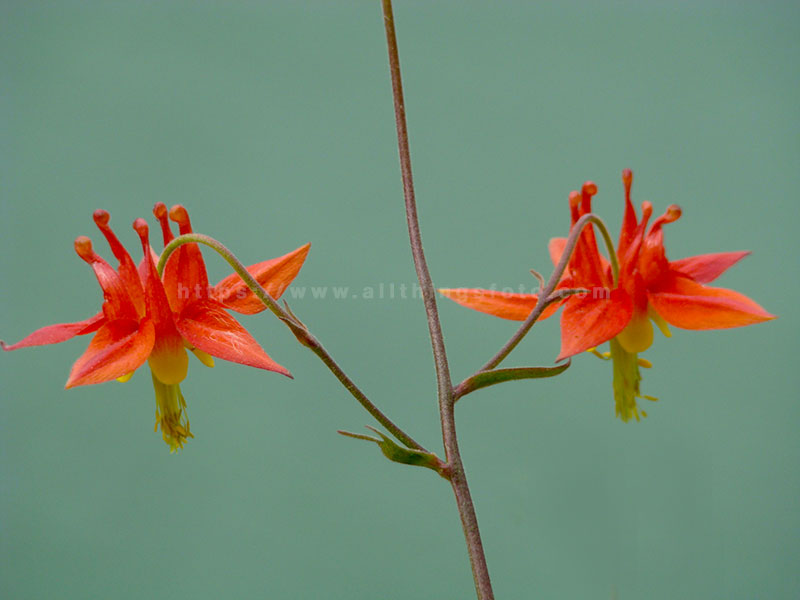
Creative Ways To Capture Flowers In New And Interesting Ways
Explore the double exposure technique, merging images of flowers with other elements. Elements like landscapes, textures or abstract patterns. This blending creates unique and visually captivating compositions. Capturing wild flowers with a majestic landscape in the background adds to the story you are trying to tell.
Experiment with light painting techniques to add a touch of magic to your flower images. Use a small flashlight or LED light to paint light trails around the flowers. Producing a surreal and dreamlike atmosphere.
Embrace minimalism focusing on a single flower or small group of flowers against an uncluttered background. Use negative space and simplicity to convey elegance and emphasize the beautiful blooms.
Photograph the blooming process of a flower creating a time lapse sequence. Using a tripod, capture a sequence of shots over an extended period. Revealing the transformation of the flower. Or shoot a video of the flower to capture the movement of nature.
Experiment with intentional distortion using creative lenses like a Lensbaby or pinhole lens. These lenses create unique and dreamlike effects, adding artistic interpretation.
Venture into x-ray photography, revealing the internal structures of flowers. Unveiling a hidden world beneath the surface. Offering a fresh perspective on floral anatomy.
Use an infrared filter or converted camera to capture flowers in the infrared spectrum. Creating surreal and otherworldly images. Transforming colors and textures of the flowers into monochromatic renditions.
Explore unconventional color palettes experimenting with post processing or colored filters. Introduce unexpected hues to flower images providing a unique, artistic twist. This also helps to improve your editing skills.
Take close up shots of flowers using a macro lens. Focus on abstract elements like shapes, lines and textures. Zoom in on the details revealing intriguing patterns and create a sense of mystery.
Create composite images combining multiple flower photographs into a single composition. Experiment with layering, blending and flower arranging differently. Thus constructing a visually captivating and imaginative scene.
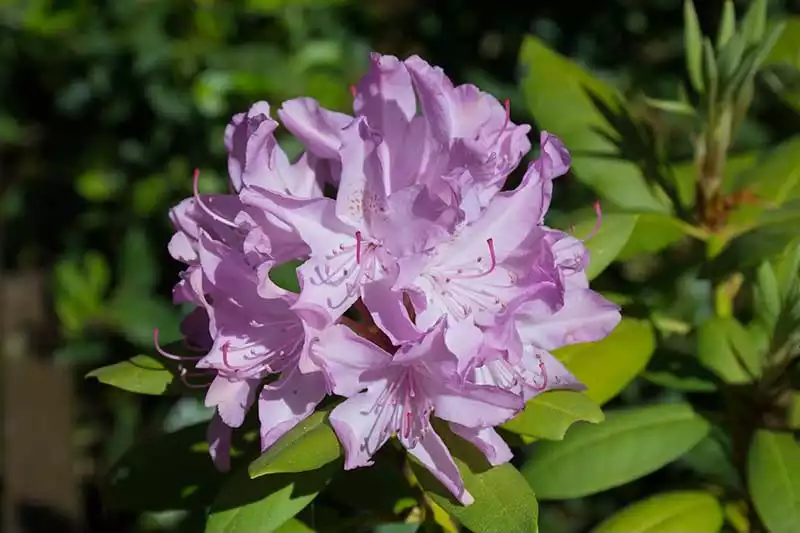
Processing and Editing After Photographing Flowers
Basic Post Processing Techniques For Flower Pictures
Basic post processing techniques for flower photos involve adjusting composition, white balance, exposure, contrast, saturation, sharpening and clarity. Crop to improve framing. Fine tune white balance for accurate colors. Adjust exposure and contrast for optimal brightness. Enhance saturation to make colors pop. Apply selective sharpening for fine details and adjust clarity for depth and definition. These techniques help enhance the overall appeal of flower photos while maintaining a natural and realistic look. Experiment with these techniques to bring out the full potential of your floral images
Advanced Editing Techniques For Enhancing Your Flower Pictures
Advanced editing techniques can transform your flower pictures into stunning works of art.
Key Techniques Include:
Selective Editing
An advanced technique, used in image editing to apply adjustments or modifications to specific areas of an image. It allows for precise control and targeted enhancements. With selective editing, you can isolate certain regions or elements within the image. Then make adjustments such as exposure, contrast, saturation or color grading to only those areas. This technique is typically achieved through the use of adjustment layers, masks or selection tools. It allows photographers to fine tune specific technical aspects of an image and create a more impactful and customized result.
Dodge And Burn For Enhancing Details And Depth
An advanced editing technique, used to enhance details and add depth to an image. It involves selectively lightening (dodging) or darkening (burning) specific areas of the photo. By adjusting the exposure in targeted regions, you can emphasize highlights, shadows and contours. Resulting in a more three dimensional and captivating image. Dodge and burn is used to enhance textures, bring out intricate details in flowers, create a sense of depth or draw attention to specific elements. This technique is often applied using brush tools with varying levels of opacity to gradually build up the desired effect. Which provides more control and enhances the visual impact of the image.
Frequency Separation For Precise Adjustments
An advanced editing technique, used for precise adjustments in image editing. It involves separating the high frequency details (such as textures, fine lines and wrinkles) from the low frequency colors and tones in an image. By splitting the image into different frequency layers, you can independently edit and manipulate each layer for precise adjustments without affecting the overall image quality. This technique allows you to target specific aspects of the image, such as smoothing skin tones while retaining fine details or adjusting textures without altering the underlying colors. Frequency separation is commonly used in portrait retouching to achieve natural and seamless enhancements, but it can also be applied to flower photography to fine tune specific elements while maintaining the overall image integrity.
HDR Blending For A Balanced Dynamic Range
An advanced editing technique, used to create a balanced dynamic range in an image. This method combines various exposures captured of the identical scene. All taken at different shutter speeds, to capture a wider range of light and shadow details. By blending these exposures, areas that are overexposed in one image can be properly exposed in another. Resulting in a final image with a more balanced distribution of tones and increased overall dynamic range. HDR blending is particularly useful in situations with high contrast, such as capturing flower photographs with bright highlights and deep shadows. The technique helps preserve intricate details and ensures that both the brightest and darkest areas are properly exposed. Resulting in a more visually pleasing and well balanced image.
Color Grading For Mood Enhancement
An advanced editing technique, used to enhance and manipulate the colors in an image to evoke a specific mood or atmosphere. By selectively altering the colors in an image, you enhance the emotional impact, create a cohesive visual style or convey a particular ambiance. Color grading involves adjusting contrast, saturation, vibrancy or using color curves and selective color adjustments to fine tune specific tones. This technique is often employed in various genres of photography, including flower photography, to create a distinct and captivating aesthetic that enhances the mood and storytelling elements of the image.
Creative Filters For Artistic Effects
An advanced editing technique, used to apply artistic effects to flower photography, enhancing the visual appeal and adding a unique touch. These filters simulate various artistic styles or optical effects to transform the look and feel of the image. Examples of creative filters include vignettes, texture overlays, film grain, soft focus and vintage effects. By applying these filters, you can add depth, texture or a nostalgic feel to your flower images. Which infuses them with a distinct artistic interpretation. Creative filters offer a range of possibilities for personal expression. They help create a specific mood or evoke a particular aesthetic to make your flower photography stand out.
Noise Reduction And Sharpening For Improved Clarity
An advanced editing technique, used to enhance the clarity and overall quality of flower photographs. Noise reduction reduces the digital noise that can appear as grainy or pixelated artifacts. This digital noise is seen in images taken with higher ISO settings. By applying noise reduction techniques, you achieve smoother and cleaner images. Which preserves the fine details and improves the image quality. Sharpening, enhances the clarity and crispness of the image by emphasizing edge contrast. It brings out intricate details in the flower petals, stamens or other elements. Making the image appear more defined and visually appealing. By combining noise reduction and sharpening, you achieve improved clarity and enhance the fine details of your flower photographs.
Content Aware Fill And Cloning For Seamless Removal Of Distractions
An advanced editing technique, used to seamlessly remove distractions from an image. It involves intelligently analyzing the surrounding pixels and automatically filling or cloning the selected area with similar content. Content aware fill is particularly useful when removing unwanted objects or distractions from the image. Cloning allows you to duplicate and blend pixels to cover up imperfections or remove unwanted elements. This technique helps create a seamless and natural looking result. It ensures the edited areas seamlessly blend with the surrounding image. By using content aware fill and cloning, you can effectively eliminate distractions, clean up the composition and enhance the visual appeal of your flower photographs.
Perspective Correction For Accurate Representation And Advanced Retouching For Flawless Appearance
An advanced editing technique, used to correct distortions and align the perspective in flower photography. It helps ensure that vertical and horizontal lines appear straight and true to the viewer’s perception. By adjusting the perspective, you accurately represent the subject and surroundings. Eliminating any unwanted distortions or tilts caused by camera lens limitations or shooting angles.
“Advanced retouching” is another technique used to achieve a flawless appearance in flower photography. It involves precise and meticulous editing to enhance the overall quality of the image. This includes removing blemishes, refining details, adjusting tones, or making subtle enhancements while maintaining a natural and authentic look. By utilizing perspective correction and advanced retouching techniques, you ensure accurate representation. Thus creating visually appealing flower photographs that are free from distractions or imperfections.
Mastering these techniques allows you to elevate the beauty of your flower pictures to new levels. Unlocking their full potential through refined and creative enhancements.
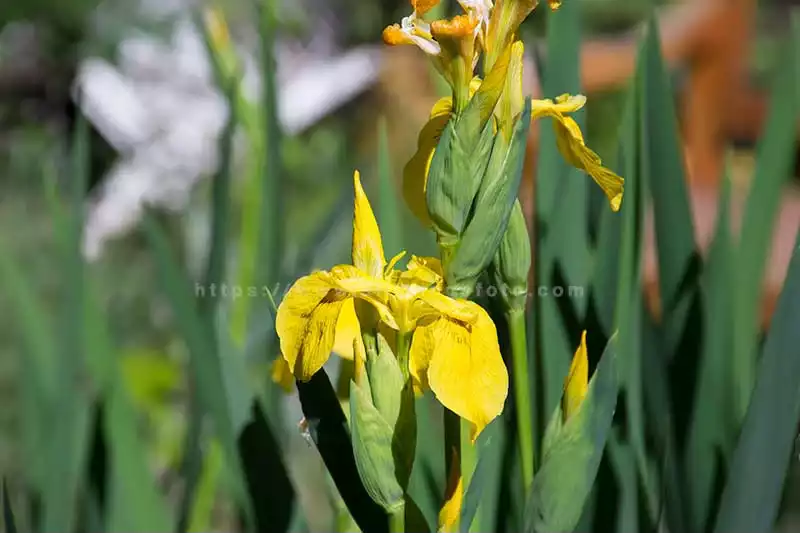
Popular Software And Tools For Flower Photography Editing
Popular software and tools for flower photography editing include Adobe Photoshop and Lightroom. Which offer a wide range of advanced editing features and capabilities. Other notable options include Capture One, DxO PhotoLab, Luminar and ON1. Each providing powerful tools for enhancing colors, details and overall image quality.
Flower Photography for Different Occasions
Wedding Flower photography
Flower photography plays a significant role in capturing the beauty and essence of weddings. Wedding flower photography focuses on documenting the floral arrangements, bouquets and intricate details contributing to the ambiance of the occasion. Photographers strive to capture the delicate petals, vibrant colors and artistic compositions of the beautifully arranged flowers, showcasing the wedding theme and decor.
It involves capturing candid shots of the bride holding her bouquet, close ups of boutonnieres and wider shots of flower arrangements in the ceremony and reception venues. Wedding flower photography aims to immortalize the short lived beauty of flowers. This ensures the cherished moments are preserved for a lifetime of memories.
Tips To Mastering Wedding Flower Photography
Use a macro lens on your camera to capture intricate details of the wedding flowers, like the delicate petals, patterns and textures. This allows you to showcase the fine craftsmanship and artistry that goes into the floral arrangements.
Experiment with different depths of field to create artistic effects. Use a shallow depth of field to isolate the focal point, such as the bride’s bouquet, allowing the surrounding flowers to softly blur in the background. This adds a dreamy and romantic touch to the image.
Utilize natural and artificial light to bring out the true colors and nuances of the wedding flowers. Soften the light using diffusers or sheer fabrics to create a gentle and flattering illumination that enhances the delicate beauty of the flowers.
Find creative ways to incorporate the wedding theme into the flower compositions. Use props or elements that complement the overall aesthetic, such as vintage books, lace or candles. Props add a unique and personal touch to the floral shots.
Capture environmental portraits by photographing the bride or groom alongside the wedding flowers. The photograph provides context and tells a more complete story. Showcasing the emotional connection between the couple and the flowers on their special day.
Flower Photography For Home Décor And Wall Art
Flower photography provides a captivating and versatile form of home décor and wall art. Adding the beauty of flowers enhances any space with elegance, freshness and serenity. Whether displayed as standalone prints or incorporated into gallery walls, floral photographs create a visually stunning focal point. Floral photographs infuse the room with a sense of warmth and tranquility.
With various floral subjects and compositions available, from close up shots to sweeping landscapes, flower photography offers endless possibilities for personal expression and customization. It allows individuals to curate their own unique botanical sanctuary within the home. Thus bringing the beauty of nature indoors and creating a serene and inviting atmosphere.
Tips To Master Home Décor And Wall Art Photography
Pay attention to composition and framing to create captivating images. Experiment with different angles, perspectives and placements of the subject within the frame. Using these techniques add a balanced and aesthetically pleasing composition.
Use lighting creatively to enhance the ambiance and mood of your home décor and wall art photography. Experiment with natural light, window light or artificial lighting techniques. Use this lighting to create shadows, highlights and depth that add dimension and interest to the image.
Explore the textures and patterns in your home décor and wall art subjects. Highlight the intricate details with close up shots. Details like the grain of wood, the weave of fabric or the brush strokes of a painting. This adds visual interest and a tactile quality to the image.
Consider the color palette and seek harmony or contrast in your compositions. Use complementary colors or create monochromatic schemes to evoke specific moods or create visual impact. Pay attention to how colors interact with each other and the overall environment.
Pay attention to the styling and props you use to enhance your home décor and wall art photography. Select objects that complement the subject, add visual interest or tell a story. Experiment with different arrangements and placement to create an appealing and cohesive composition.
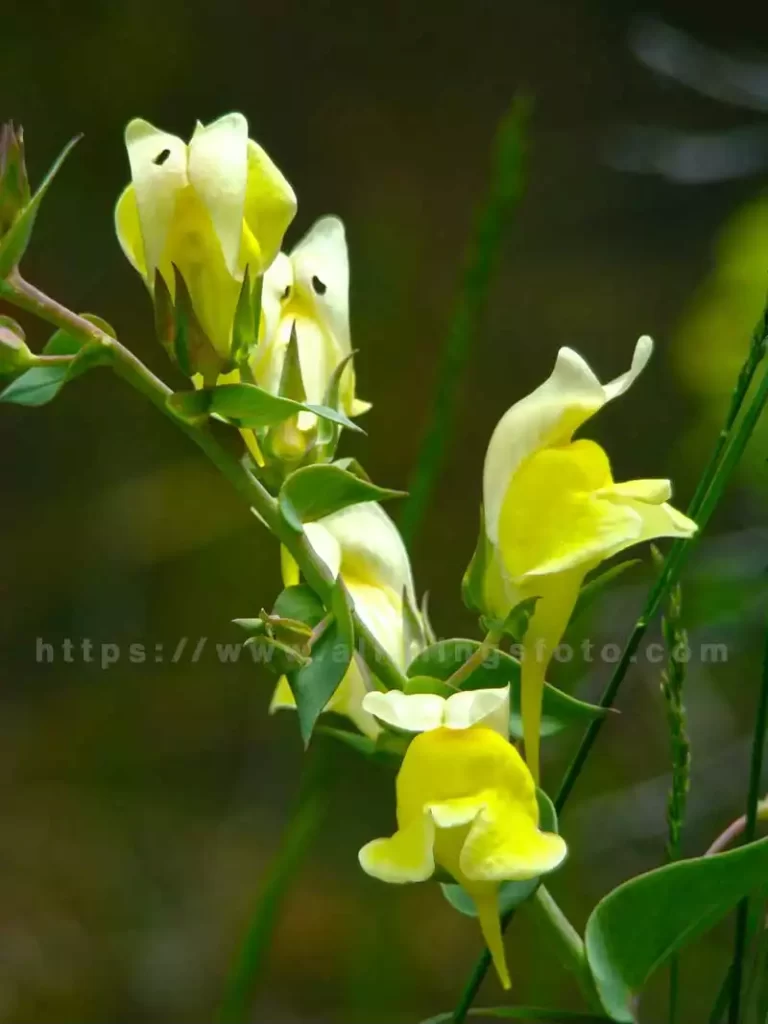
Commercial Flower Photography
Commercial flower photography captures flower images for commercial use. It involves creating visually appealing photographs that showcase the beauty, colors and unique characteristics of various floral species. Commercial flower photographers work closely with clients such as florists, nurseries, magazines and advertising agencies. The goal is to create images for marketing, advertising campaigns, product catalogs and editorial features.
The photographs are meticulously composed, well lit and edited to meet client’s specific needs. Attention to detail, knowledge of floral arrangements and the ability to capture the essence and emotional appeal of flowers are essential skills in commercial flower photography. Skillfully capturing the allure of flowers, commercial flower photographers help promote businesses, products and services. All this while celebrating nature’s innate beauty.
Tips To Build A Client Base In Commercial Flower Photography
Create a professional website or online portfolio showcasing your best work and expertise in commercial flower photography. Share it across social media platforms and photography communities to attract potential clients.
Connect with florists, event planners, nurseries and other professionals in the floral industry. Attend relevant events, trade shows and conferences to build relationships and establish partnerships that lead to client referrals.
Offer your services to local businesses such as florists, botanical gardens or magazines to photograph their floral arrangements or products. This collaboration exposes your work to their audience and potentially leads to further commercial opportunities.
Place advertisements or submit editorial features in magazines or online publications that cater to the target market for commercial flower photography. This helps raise awareness of your services and attract clients looking for professional flower photography.
Develop unique offerings such as product photography for flower related merchandise, workshops with step by step instructions on floral photography techniques or custom prints for interior designers. These specialized services can help you stand out and attract clients seeking specific expertise in commercial flower photography.
Best Flower Photography Locations
Popular Flower Photography Destinations
Popular flower photography destinations offer breathtaking opportunities to capture the beauty of nature’s blooms. Destinations like the colorful tulip fields of the Netherlands, the serene lavender fields of Provence, France and the vibrant cherry blossoms in Japan. These destinations provide stunning backdrops for photographing flowers and creating unforgettable photographic memories.
Finding Hidden Gems In Your Local Area
To find flower photography destinations in your local area, research a public garden, botanical parks and arboretums that showcase a variety of flowers. Consult local garden clubs or horticultural societies for recommendations on nearby gardens or scenic spots. Focus on seasonal flower festivals or events that highlight specific blooms. Explore nearby nature reserves, parks or even your own neighborhood for hidden gems. Additionally, connect with local photographers or online communities to gather insights and recommendations for unique flower photography locations in your area.
How To Plan A Flower Photography Trip
Planning a flower photography trip involves a few key steps to ensure a successful and rewarding experience. Focus on researching the best seasons and locations for blooming flowers. Consider factors like climate and regional flora. Prepare a detailed plan with shooting locations, sunrise/sunset times and weather predictions.
Consider alternative angles, compositions, and lighting conditions to add variety to your shots. Be mindful of ethical practices, respecting the environment and private property. Pack essential gear such as a sturdy tripod, macro lens and polarizing filter. Lastly, embrace flexibility and spontaneity. Allow room for unexpected discoveries and unique photo opportunities to make your flower photography trip truly memorable.
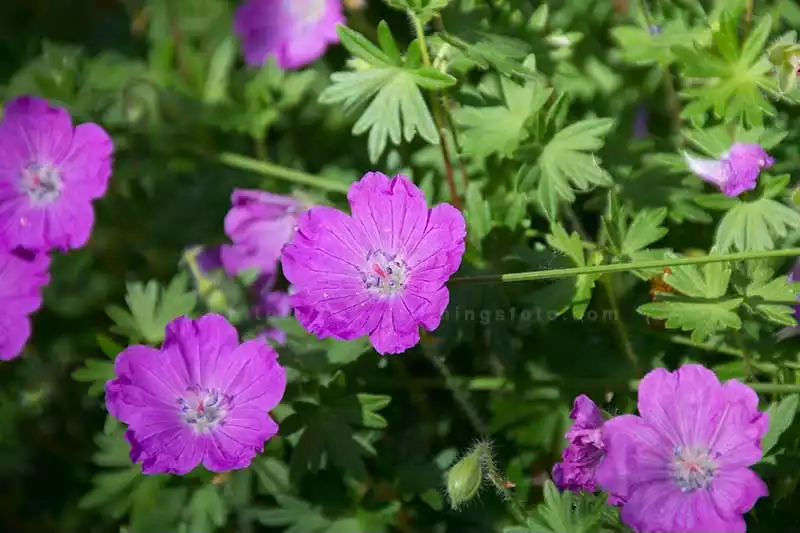
Flower Photography Ethics
Respecting Nature And The Environment When Photographing Flowers
Flower photography ethics are essential for ensuring the preservation and respect of nature and the environment. When photographing flowers, focus on minimizing negative impacts on plants and flowers.
Respecting nature and the environment involves practicing responsible behavior. Stay on designated paths and trails to avoid trampling or damaging delicate vegetation. Avoid picking or disturbing flowers in their natural habitat. This disrupts the ecosystem and hinders their reproductive cycle. Leave the location just like you found it. Don’t leave behind any trash or disturb the natural landscape.
To prevent damage to plants and flowers, use a telephoto lens or macro lens to capture close up shots. Consider the impact of your equipments weight on plants. Use stabilizers to distribute weight evenly. Refrain from moving or arranging flowers unless given explicit permission or when working with cultivated and non wild specimens.
Practice responsible flower photography to minimize environmental impact and conserve floral habitats. Seek permission when photographing flowers on private property or protected areas. Incorporate ethical editing practices into your workflow. Ensure the final images accurately represent the natural colors and characteristics of the flowers. Educate yourself about local regulations and guidelines for protected species or sensitive habitats when photographing flowers. Respect the local regulations in place.
By adhering to these flower photography ethics, we preserve and appreciate the beauty of nature while minimizing any harm to plants, flowers and the environment. Responsible flower photography allows us to photograph and share the wonder of photographing flowers while ensuring their longevity and ecological balance.
Sharing And Selling Your Flower Photos
Tips For Sharing Your Flower Photos Online
Sharing and selling your flower photos is a rewarding way to showcase your talent, gain recognition as a flower photographer and generate income. Here are some practical tips for sharing your flower photos online and monetizing your work.
When Sharing Your Flower Photos Online, Consider The Following Tips:
Choose popular photography centric platforms, such as Instagram, Flickr or 500px, to share your flower photos with a wider audience.
Create a visually appealing portfolio website. Utilize online photography communities to showcase your best flower photos. Engage with fellow photographers and enthusiasts.
Leverage social media platforms to share your flower photos, engage with followers and participate in relevant photography communities and hashtags.
Protect your work by adding a discreet watermark to your images when sharing online to prevent unauthorized usage.
To monetize your flower photography, you can consider the following avenues:
Offer high quality prints of your flower photos for sale through your website, online marketplaces or local art shows and exhibitions.
Explore opportunities to license your flower photos for commercial use. Like advertising campaigns, editorial publications or product packaging.
Share your flower picture expertise by organizing workshops or online courses on flower photography. Offer participants a chance to learn from your experience by providing detailed instructions.
Collaborate with businesses, floral designers or publishers who require customized flower photos for their specific needs.
Another option is selling your flower photos on stock photography sites:
Identify reputable stock photography platforms like Shutterstock, Adobe Stock or Getty Images that accept submissions from photographers.
Familiarize yourself with the submission guidelines and required technical aspects of each stock photography site. Make sure your flower photos meet their standards.
Optimize your image titles, descriptions and keywords to increase seo within the stock photography platforms.
Regularly upload new and diverse flower photos to maintain an active presence and increase your chances of generating sales.
By implementing these strategies, you effectively share and monetize your flower photos. Thereby gaining exposure, recognition and potential income from your beautiful and captivating floral imagery.
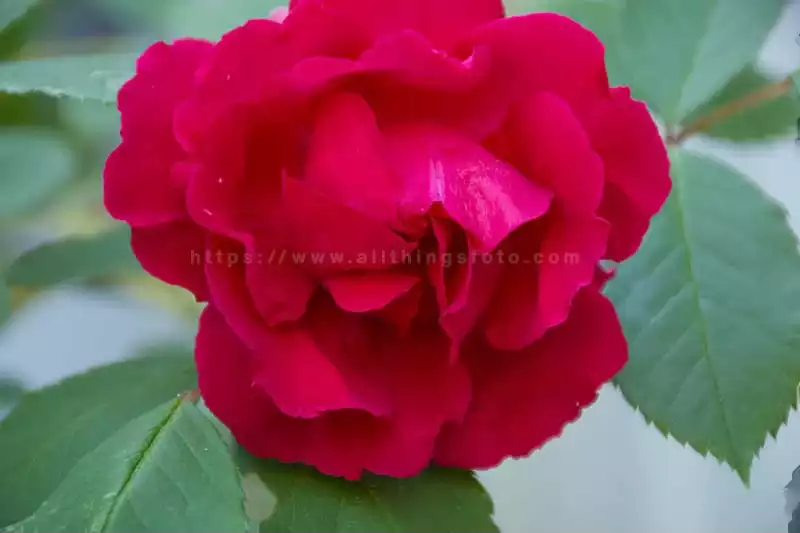
Conclusion To Master The Art Of Flower Photography
Photographing flowers is a beautiful and rewarding genre that allows you to capture the intricate beauty and details of nature. Whether you’re a beginner or an experienced flower photographer, this comprehensive guide has covered all the essential tips, techniques and tricks you need to master the art of flower photography.
By understanding the anatomy of a flower, mastering your equipment, settings and using creative shooting techniques, you create visually appealing images that showcase the unique characteristics of each flower. Post processing and editing tools also help you enhance your photos and give them a unique look and feel.
By respecting nature and following ethical practices, you can capture beautiful flower photos without harming the environment. Whether you’re shooting for personal or commercial purposes, there are many ways to share and monetize your flower photography, and numerous communities and resources available to help you improve your skills.
With the tips, techniques and inspiration I have provided in this guide, you’re well on your way to master the art of flower photography. So grab your camera, head outside and focus on shooting flowers in your own unique way.

